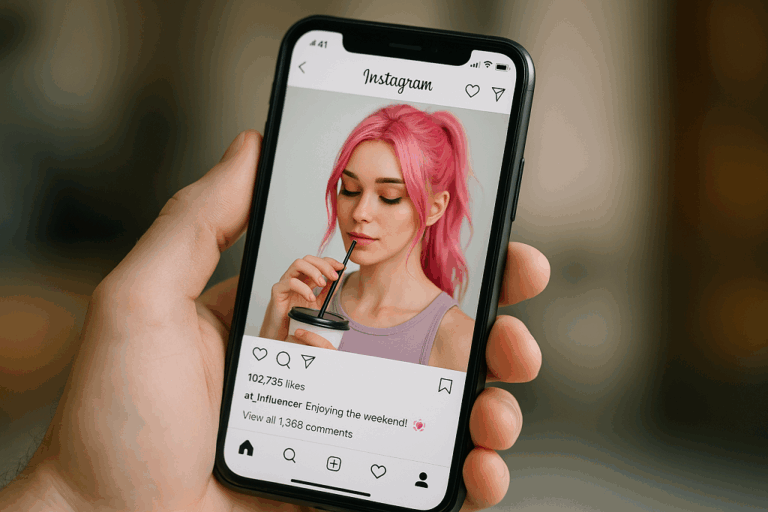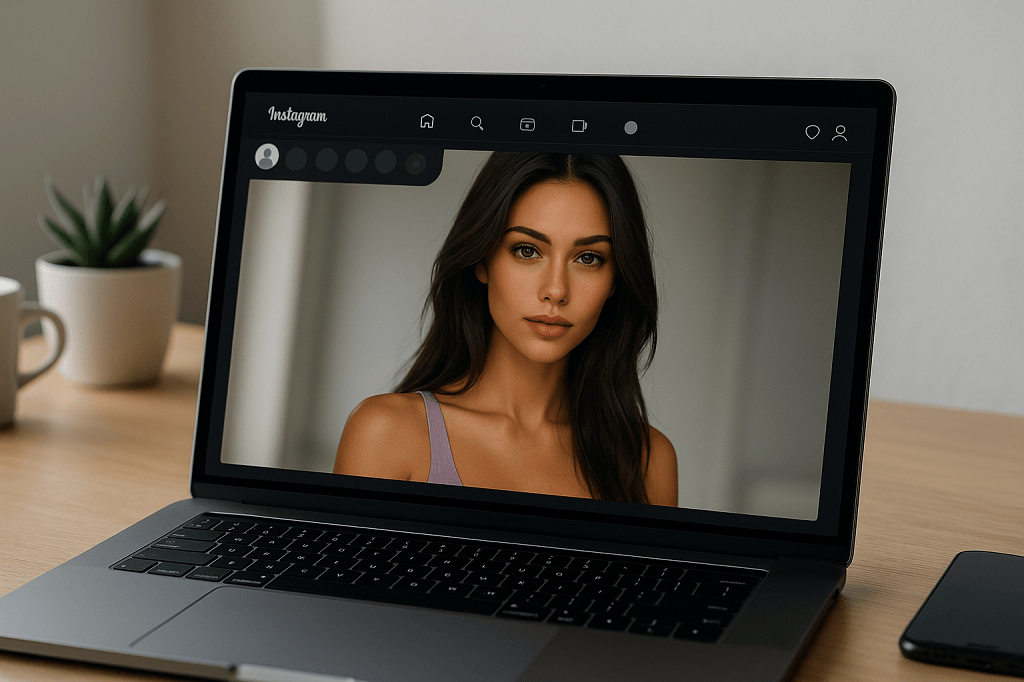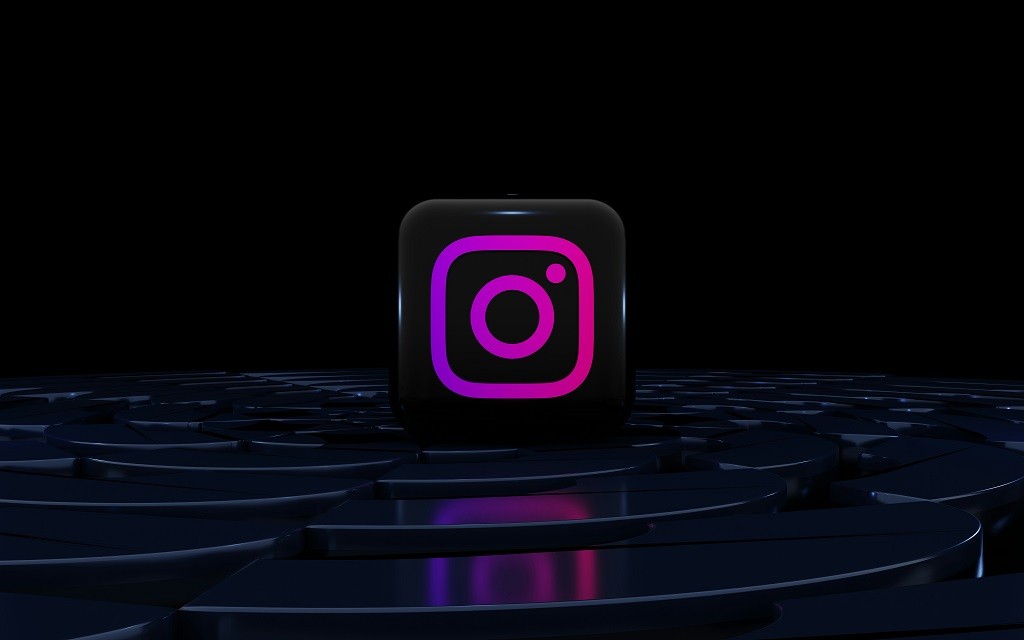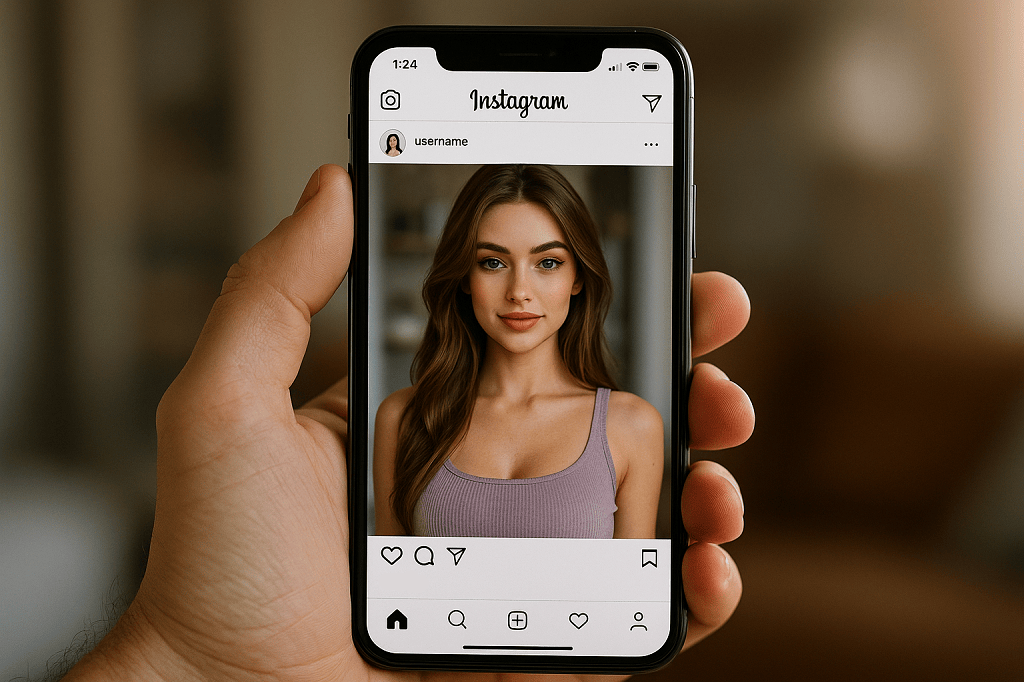AI Instagram Models Explained: How to Build & Monetize Yours
AI influencers are reshaping social media. This article breaks down how an AI Instagram model is created, managed, and monetized — from tools used by digital agencies to real success stories like Aitana Lopez. Learn how these virtual personalities attract followers, build revenue, and how Scrile AI helps brands develop their own custom AI models with full control, privacy, and monetization options.

ai instagram model
A new type of influencer has moved into Instagram — the kind that doesn’t eat, sleep, or age. The AI Instagram model trend is turning social media into something between art, tech, and marketing. These digital personalities look real enough to fool anyone scrolling past. Some, like Aitana Lopez, earn over €10,000 a month from brand deals and collaborations.
Behind every post is a team — designers, writers, and AI engineers running scripts that generate photos, captions, and replies. These aren’t simple avatars. They’re fully shaped identities with tone, opinions, and planned marketing calendars.
Creating one isn’t science fiction anymore. Generative tools can produce realistic AI model girls with photorealistic features and personality frameworks. For brands, this means full creative control. For entrepreneurs, it’s a new business model.
This article explains how these models are built, how they’re managed, and how creators monetize them — from AI-generated female models to complete virtual influencer brands — and how you can start your own with modern tools.
The Rise of AI Models on Instagram
Instagram used to be about perfect lighting and flattering filters. Then came editing apps, digital retouching, and avatars — until the line between real and simulated disappeared. Now, entire careers are built around digital faces that never existed in the physical world. The AI Instagram model has become the next logical step in influencer culture.
By 2025, AI influencers are no longer novelties. They’re regular participants in global marketing campaigns, standing beside human creators in product launches and brand collabs. Market analysts expect the global AI influencer industry to reach several billion dollars in value within the next few years. Audiences engage because the illusion feels real — the same aesthetic polish, the same storytelling rhythm, only endlessly scalable.
This shift also introduced new creative roles. The people behind these AI generated female models work more like digital producers than photographers. They design algorithms, not makeup looks. Their “models” are files, not faces. Yet the emotional response from audiences — likes, shares, and direct messages — is completely human. These AI models female now shape what online beauty and identity even mean.
From Experiment to Industry

The earliest examples looked uncanny. Faces that felt too smooth, smiles too symmetrical. Still, the curiosity worked. Projects like Lil Miquela gained hundreds of thousands of followers, even when everyone knew they weren’t real. Over time, creators learned to humanize these digital personas — giving them backstories, opinions, even conflicts. The content shifted from glossy perfection to something that felt alive.
Today, entire agencies are built around them. Teams of designers, AI engineers, and social strategists manage what used to be a single influencer’s workload. Traditional modeling agencies now hire developers instead of photographers, data scientists instead of stylists. Engagement metrics often prove why — AI models can post daily, respond instantly, and maintain the same tone forever. Their average engagement rate quietly outperforms many human influencers who burn out after constant content cycles.
Why Brands Love AI Models
For brands, AI models mean reliability. No travel delays, no last-minute cancellations, no unexpected controversies. A digital creator posts exactly when scheduled, looking flawless every time.
They can operate in multiple languages, across multiple time zones, and maintain a consistent message. A fashion label can have its AI Instagram model greet followers in English in the morning and Spanish by evening — all with a single click.
Cost is another factor. There’s no need for locations, photographers, or makeup teams. Companies like Prada, Samsung, and Balmain have already worked with virtual influencers, proving that synthetic faces sell real products. For global brands, AI models bring stability and creative freedom that human teams rarely can.
How They Are Created and Managed

Building an AI Instagram model is part design, part coding, and part strategy. It starts like a creative brief for a brand campaign — with moodboards, reference faces, and tone guidelines — but instead of hiring a photographer, you train a model made of pixels and code.
The process mixes art direction with technical precision. Teams use AI-generated models built from tools that simulate lighting, fabric, and expressions so real they pass for human. Writers build the character’s voice; developers automate reactions and posting. Everything runs on a cycle — concept, creation, training, management. Each model becomes both product and performer, existing in an endless content stream.
The Process Behind the Face
- Design and personality setup. 3D artists or AI designers start with a visual draft in Stable Diffusion or Midjourney, shaping face symmetry, skin texture, and expression range. Then they define habits and interests to give the persona emotional depth.
- Voice and tone development. Writers decide how the model “talks” — from slang to sentence rhythm. Each caption and DM reflects that personality, making her voice consistent across all channels.
- Automation tools. Scripts control posting schedules, captions, and comments. Chat integrations simulate replies that feel spontaneous.
- Data feedback loop. Every like and message becomes input for future adjustments. The more engagement a model receives, the better her algorithm predicts what to post next.
- Management and scaling. Teams analyze metrics, refresh visuals, and negotiate sponsorships just like a real agency.
Typical tool stack:
- Design: Leonardo AI, Runway, Photoshop
- Behavior: ChatGPT, Character.AI, Scrile AI’s language engine
- Scheduling: Buffer, Later, or custom dashboards
The teams managing AI models girls operate like modern talent agencies — balancing art, data, and marketing. Their “talent” never sleeps, never misses a deadline, and stays camera-ready 24 hours a day.
Case Studies: Aitana López and Others

The story of Aitana Lopez shows how the influencer industry changed course. Created by The Clueless agency in Spain, she became one of the first digital models to rival human creators — pulling in as much as €10,000 per month through sponsorships and brand collaborations. Her creators didn’t design her to replace anyone; they built her to fix the constant problems of influencer marketing: scheduling conflicts, reputation risks, and unpredictable costs.
Aitana’s daily life looks just like any full-time creator’s — curated gym selfies, brand photoshoots, fitness videos, and lifestyle posts — except her entire routine exists inside a hard drive. A team updates her look, personality traits, and captions to match cultural trends. Every campaign feels spontaneous, but it’s entirely planned. This experiment proved what many suspected: AI-generated models can hold audiences’ attention just like real influencers, sometimes even better.
Aitana became the blueprint for the next generation of digital creators — human enough to be relatable, polished enough to be marketable.
Lessons from Other AI Influencers
Aitana isn’t alone. Imma, a Tokyo-based virtual fashion model, blends street style with surreal visuals and has become a recognizable face in Asia. Thalasya, Indonesia’s travel-focused digital creator, documents resort stays and local experiences that look authentic to the last pixel. K/DA, a virtual pop group tied to the gaming industry, turned AI performance into mainstream entertainment.
Each AI instagram girl fits a niche — fashion, travel, or music — but their success comes from the same core tactics: consistent storytelling, emotional engagement, and constant collaboration with human brands or creators. Their teams treat them like real personalities, with values, humor, and curated imperfections.
| AI Influencer | Type | Followers | Main Focus | Notable Feature |
| Aitana López | Fashion | 383K+ | Lifestyle & fitness | Managed by agency |
| Imma | Style | 387K+ | Tokyo street fashion | Ultra-realistic visuals |
| Thalasya | Travel | 451K+ | Tourism campaigns | Real-time travel posts |
| K/DA | Music | 460K+ | Pop culture & gaming | Group persona concept |
Monetization Methods

Money flows differently in the world of AI Instagram models. Once created, these digital personalities keep generating income long after their first post. There are no travel fees, makeup costs, or shoot delays — only scheduled uploads and stable engagement. That’s why brands and agencies now treat them like miniature online businesses. Running and funding an AI Instagram girl follows the same rules as any digital startup: investment, consistency, and steady community growth.
Below are the main ways AI creators and their teams turn pixels into profit:
- Brand collaborations. Sponsored posts, affiliate partnerships, and product launches make up the biggest share of revenue. Companies value AI models for flawless consistency and easy customization.
- Subscriptions and memberships. Followers pay for exclusive behind-the-scenes images, stylized videos, or NFT-based collectibles that feel personal.
- Licensing. Brands pay to feature the AI model’s face in ads, posters, or merchandise. It’s a low-maintenance, high-return deal.
- Merch and digital goods. Selling filters, wallpapers, or AI-generated video content lets audiences take a piece of the character’s style home.
- Custom fan interactions. Chatbots and private message access can be monetized through pay-per-chat or donation models — a growing niche powered by interactive AI.
Real examples:
- Aitana López earns about €10,000 per month through brand sponsorships and content deals.
- Imma has worked with Samsung and IKEA on visual campaigns.
- Thalasya collaborates with tourism boards and resorts in Asia.
The strongest models mix multiple streams at once, balancing authenticity with business strategy. Their income doesn’t depend on a single viral post but on consistency — the same logic behind solid fundraising tips: build trust, show results, and keep the audience engaged.
Launch an AI Model Under Your Brand with Scrile AI

After exploring every AI Instagram model success story, one thing becomes clear — these projects aren’t out of reach. With the right technology, anyone can build a digital persona that fits their brand, voice, and audience. That’s exactly what Scrile AI delivers. It’s not a plug-and-play app but a custom development service designed for businesses, creators, and agencies that want to create their own ecosystem of AI-driven models and influencers.
Scrile AI focuses on complete control and flexibility. You don’t rent space on someone else’s system; you own your product entirely. The service provides the tools to design, scale, and manage unique digital personalities that behave like human influencers — responding to users, sharing content, and supporting monetization through built-in payment systems. Every component, from interface to user flow, can be adjusted to fit your branding.
The platform values privacy and secure architecture. All data stays under your management, making it a safe environment for personalized AI interactions and community building.
Scrile AI helps you:
- Build your own AI model girl or even a whole lineup of virtual creators.
- Add chat, video, and interactive storytelling functions for audience engagement.
- Integrate monetization — subscriptions, paid messages, or donation systems.
- Control every aspect from one admin dashboard with analytics and automation tools.
The approach mirrors the foundation of successful digital ventures: independence, privacy, and scalability. Scrile AI turns the concept of an AI Instagram model into a business opportunity — giving creators and companies the freedom to design digital personalities that truly belong to them.
Conclusion
The AI Instagram model marks a new chapter in digital identity and marketing. These virtual creators blend technology with storytelling, building loyal audiences through personality and precision. Success depends on creativity, narrative depth, and community — the same elements that drive any lasting brand.
What once sounded experimental is now accessible. With flexible tools and the right strategy, anyone can turn an idea into a self-sustaining AI presence. Scrile AI makes that possible by offering tailored development for brands and creators ready to design their own virtual influencers.
If you’re considering this next step, explore Scrile AI solutions and see how your digital model can become the face of your future audience.
FAQ
Who is the famous AI model on Instagram?
The most famous AI Instagram model is Aitana Lopez, a digital influencer created by The Clueless agency in Spain. She works with fashion and fitness brands, runs an active social media account, and earns around €10,000 per month. Every post, caption, and partnership is managed by a creative team, making her one of the first fully virtual personalities to achieve real commercial success.
How to tell if an Instagram girl is AI?
It can be difficult to spot, but certain details usually give it away. Backgrounds often appear slightly distorted or uneven, faces can look too flawless, and textures like hair or jewelry sometimes blur under close inspection. There’s also a subtle lack of emotion in the expressions that feels off. A quick reverse image search usually confirms if the picture comes from an AI Instagram model rather than a real person.
Is Nikki Bellini AI-generated?
Yes. Nikki Bellini is confirmed to be an AI-generated model, not a real person. Her images are created using advanced generative tools and managed like any influencer brand. She’s another example of how AI-driven characters are now blending seamlessly into mainstream social media culture.
